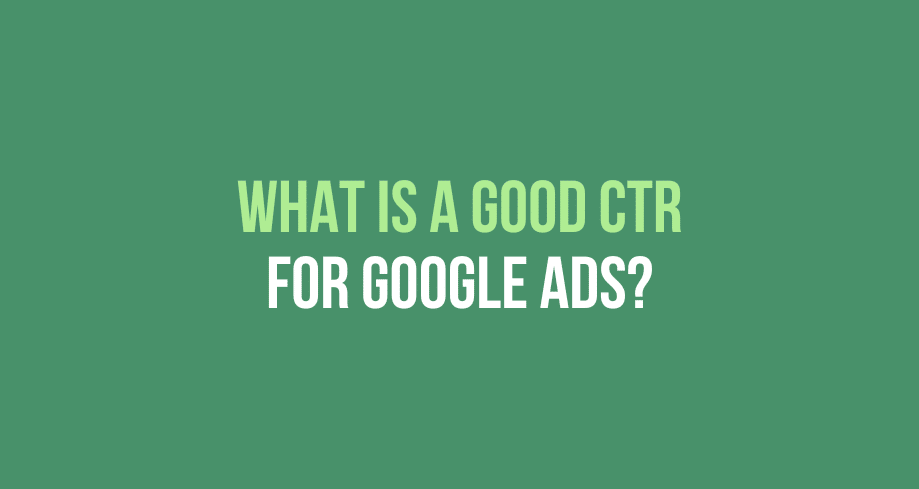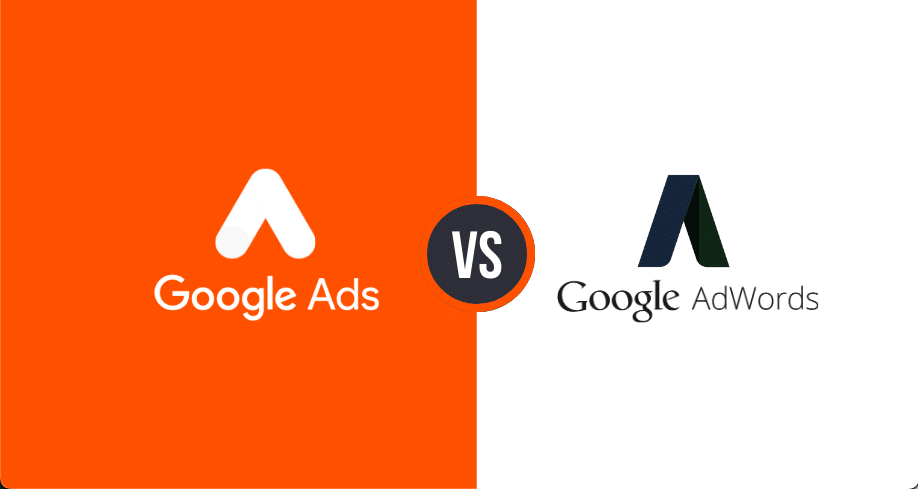In the world of digital advertising, measuring the success of your ad campaigns is crucial. And one of the key metrics that hold immense significance is Click-Through Rate (CTR). Whether you’re an advertiser, marketer, or business owner, understanding CTR in the context of Google Ads is essential for maximizing the effectiveness of your campaigns.
At its core, Click-Through Rate (CTR) is a metric that measures the ratio of ad clicks to impressions. In simpler terms, it gauges how many people clicked on your ad after seeing it. CTR is a powerful indicator of ad performance and relevance, providing insights into how well your ads resonate with your target audience.
Why is CTR so important?
Well, think of it this way: a high CTR indicates that your ads are grabbing attention and enticing viewers to take action. It signifies that your ads are compelling and relevant enough to drive engagement. On the other hand, a low CTR could suggest that your ads aren’t resonating with your audience or that there’s room for improvement in your targeting, ad copy, or overall strategy.
So, what constitutes a good CTR for Google Ads? This guide aims to answer precisely that. We’ll delve into the factors that influence CTR, provide benchmarks based on industry standards, and equip you with the knowledge to optimize your ad campaigns for a better CTR. Whether you’re a seasoned advertiser or just starting out, this guide will empower you to make informed decisions and achieve greater success with your Google Ads campaigns.
Let’s dive in and unravel the secrets of a good CTR for Google Ads.
What is Click-Through Rate (CTR)?
Click-Through Rate (CTR) is a fundamental metric used in digital advertising, specifically in Google Ads. It represents the ratio of ad clicks to impressions, measuring the percentage of users who click on an ad after viewing it. CTR serves as a vital indicator of how effective an ad is in generating clicks and capturing the interest of the audience.
A high CTR implies that the ad is resonating well with viewers, enticing them to take action. On the other hand, a low CTR may suggest that the ad is not compelling or relevant enough to drive engagement. Therefore, CTR plays a pivotal role in evaluating ad performance and relevance.
You can put these ads in the Google Search Network, enhancing your digital marketing by having your ads appear in search engines.
How is CTR Calculated in Google Ads?
Calculating CTR in Google Ads is relatively straightforward. The formula to determine CTR is as follows:
CTR = (Total Clicks / Total Impressions) x 100
In this formula, the total clicks refer to the number of times users clicked on the ad, while total impressions represent the number of times the ad was displayed to users.
It is important to note that CTR is expressed as a percentage. For example, a CTR of 2% means that out of 100 ad impressions, the ad received 2 clicks.
Accurate tracking of clicks and impressions is crucial for calculating CTR correctly. Google Ads provides robust tracking capabilities to monitor these metrics, ensuring that you have reliable data to evaluate your ads’ performance accurately as PPC ads.
Benchmarking CTR for Google Ads
What is a Good CTR for Google Ads?
CTR benchmarks in Google Ads can vary significantly based on several factors, including the industry, ad format, targeting, and competition. It’s important to note that what might be considered a good CTR in one industry or ad format may differ in another.
To provide a general guideline, a good CTR range for Google Ads is typically around 1% to 5%. However, this range can vary depending on the factors mentioned earlier. Certain industries, such as finance or healthcare, may have higher benchmarks due to increased competition and higher ad costs for Google search ads.
It’s essential to keep in mind that CTR benchmarks can also change over time. Ad formats and strategies evolve, competition fluctuates, and user behavior shifts. Therefore, it’s crucial to regularly monitor and compare your CTR against current industry benchmarks to assess the effectiveness of your ad campaigns.
Factors Affecting CTR
Several factors can impact CTR in Google Ads. Understanding and optimizing these factors can significantly improve your CTR and overall ad performance.
- Ad Relevance: Creating highly relevant ads that align with user intent and search queries can boost CTR. Ensure that your ad copy, keywords, and landing page content are closely related and provide value to the user.
- Targeting: Precise audience targeting is crucial in improving CTR. By understanding your target audience’s demographics, interests, and behaviors, you can effectively tailor your ads to resonate with them.
- Ad Copy: Compelling and engaging ad copy is vital for capturing users’ attention and encouraging them to click. Use strong calls to action, highlight unique selling points, and convey a clear value proposition to entice users to take action.
- Ad Placement: The placement of your ads within search results or display networks can impact CTR. Aim for prominent positions that ensure visibility and attract user attention.
Optimizing these factors can increase your CTR and overall campaign performance. Here are some tips and best practices:
- Conduct thorough keyword research to target relevant and high-intent keywords.
- Create multiple Google ad variations and perform A/B testing to identify high-performing ad copies.
- Utilize ad extensions to provide additional information and improve visibility.
- Regularly analyze and refine your targeting settings based on performance data.
- Continuously monitor and optimize your campaigns to stay ahead of the competition.
Improving CTR for Google Ads
Ad Optimization Techniques
To enhance your CTR and overall ad performance in Google Ads, optimizing your ads for relevance and quality is crucial. Here are some strategies to consider:
- Improve Ad Relevance and Quality: Ensure that your ads are highly relevant to the search queries and keywords you’re targeting. Craft compelling ad copy that effectively communicates your unique selling points and entices users to click. Incorporate relevant keywords in your headlines and descriptions to improve ad relevance and attract the right audience.
- Utilize A/B Testing: A/B testing allows you to compare different variations of your ads to identify the most effective ones. Test headlines, ad copy, calls-to-action, and design elements to determine which combinations yield the highest CTR. Continuous testing and optimization can significantly improve your CTR over time.
Audience Targeting and Segmentation
Understanding your target audience is crucial for improving CTR. Here’s how audience targeting and segmentation can help:
- Know Your Target Audience: Gain a deep understanding of your target audience’s demographics, interests, behaviors, and pain points. This knowledge will enable you to create more tailored and relevant ads that resonate with your audience.
- Segment Your Audience: Divide your target audience into smaller segments based on specific criteria, such as age, location, interests, or buying preferences. By segmenting your audience, you can create highly targeted ad campaigns and deliver more relevant messages to each segment.
- Leverage Demographic and Interest-based Targeting: Use Google Ads’ targeting options to narrow your audience based on demographics and interests. Targeting specific demographics or users with particular interests can improve ad relevance, leading to a higher CTR.
Ad Placement and Ad Extensions
The placement of your ads and ad extensions can significantly impact your CTR. Consider the following strategies:
- Optimize Ad Placement: Ad placement attracts user attention and drives clicks. Aim to secure top positions in search results or strategically position your ads on relevant websites or placements within the Google Display Network. Experiment with different placements and adjust your bids to maximize visibility and CTR.
- Utilize Ad Extensions: Ad extensions provide additional information and opportunities for users to engage with your ads. Utilize sitelinks, callouts, structured snippets extensions to enhance your ad’s visibility, provide more relevant information, and increase the chances of clicks.
- Choose Relevant Ad Extensions and Placements: Select ad extensions that are most relevant to your business and align with your ad objectives. Ensure that the extensions and placements you choose complement your ad messaging and provide value to users.
By optimizing ad relevance, conducting A/B testing, targeting the right audience segments, and strategically placing your ads while leveraging ad extensions, you can improve your CTR in Google Ads. Continuously monitor and refine your strategies to optimize performance and drive better results.
Tracking and Analyzing CTR
Monitoring and Measuring CTR
Regularly monitoring and analyzing your CTR is crucial for optimizing your Google Ads campaigns and driving better results. Here’s why it’s important:
- Performance Evaluation: CTR serves as a key performance metric, indicating how well your ads resonate with your audience and generate clicks. By monitoring CTR, you can assess the effectiveness of your ad campaigns and make informed decisions to improve performance.
- Identifying Trends and Patterns: Analyzing CTR over time allows you to identify trends and patterns in ad performance. You can spot changes in CTR based on various factors, such as ad copy variations, targeting adjustments, or ad placements. This information helps you understand what works and what doesn’t, enabling you to optimize your strategies accordingly.
- Benchmarking Against Industry Standards: Monitoring CTR lets you compare your performance against industry benchmarks. By understanding where you stand in CTR compared to your competitors or industry averages, you can set realistic goals and strive for continuous improvement.
To track and measure CTR effectively, you can utilize various tools and platforms, including:
- Google Ads: It provides built-in reporting features that allow you to monitor and track CTR for your campaigns, ad groups, and individual ads. The platform offers comprehensive insights and data to evaluate the performance of your ads.
- Google Analytics: Integrating Google Ads with Google Analytics provides a more holistic view of your ad campaigns’ performance. You can track CTR and gain insights into user behavior, conversions, and other engagement metrics.
Frequently Asked Questions
What is a good CTR for Google Ads?
A good CTR for Google Ads typically falls from 1% to 5%. However, it’s important to consider that the benchmark for a good CTR can vary depending on the industry, ad format, targeting, and competition.
Can CTR impact my ad’s quality score?
Yes, CTR can impact your ad’s quality score in Google Ads. Quality score is an important factor in determining ad ranking and cost per click. A higher CTR indicates better ad performance, leading to a higher quality score, improved ad position, and lower costs.
Should I be concerned if my CTR is below the industry average?
If your CTR is below the industry average, it’s worth investigating the potential factors affecting your performance. Consider optimizing your ad copy, refining your targeting, or exploring new strategies to improve engagement for an average CTR. However, remember that industry averages are just benchmarks, and what matters most is improving your own campaign’s performance over time.
Conclusion
Understanding what constitutes a good CTR for Google Ads is crucial for measuring the success of your ad campaigns and optimizing your strategies. Throughout this guide, we’ve explored the concept of CTR, how to calculate it, the factors influencing it, and techniques to improve it. Implementing the strategies and techniques outlined in this guide can enhance your ad campaign’s performance and drive better results with an above-average click-through rate.





